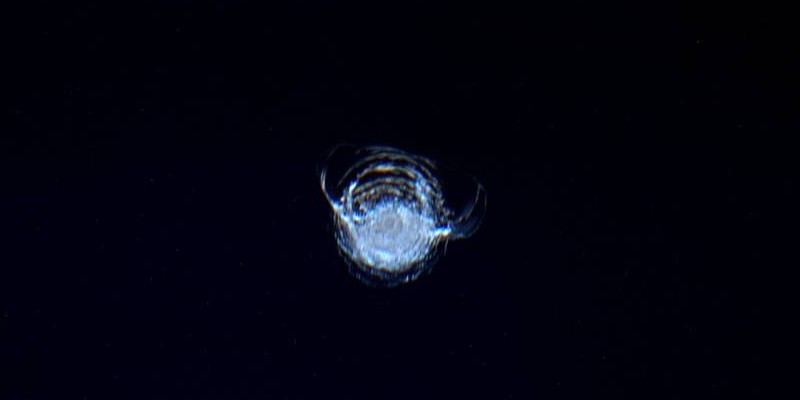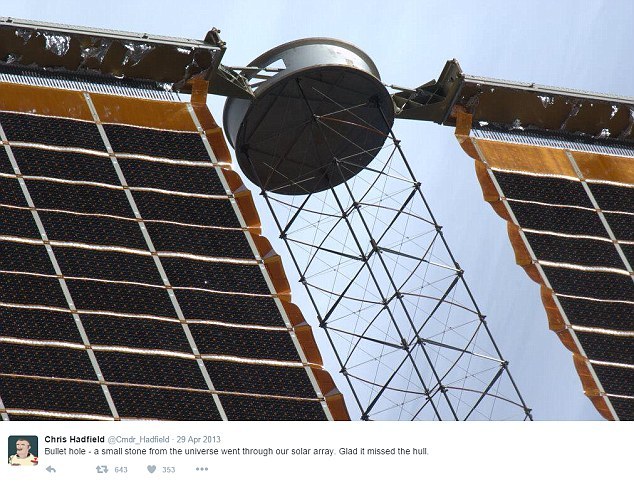A fragment of garbage has crashed into the ISS, the porthole is cracked

Damage to the window in the module "Dome". The diameter of the damaged area is about 7 mm.
Astronaut Tim Piquet from the European Space Agency handed over a photograph of the damage to the porthole on the Kupol moduledue to a collision with a small piece of space debris.
ESA specialists explained that a detached paint fragment or a small metal fragment with a size of “no more than a few thousandths of a millimeter” most likely got into the porthole.
The ISS is moving in orbit at a speed of 7.66 km / s (27600 km / h), so that any fragment flying in a different orbit can cause damage. Station portholes with a diameter of 80 cm and a thickness of 10 cm are made of laminated quartz and borosilicate glass, so collisions with such small fragments do not pose any threat. But fragments up to 1 cm in diameter can already cause “critical damage”, and any fragment with a diameter of more than 10 cm can “smash a satellite or a spacecraft into pieces,” writes ESA.
The ISS has already taken maneuvers to evade the largest and most dangerous fragments of garbage. In 2014, the station's orbit was raised by almost a kilometerso as not to overlap with the calculated trajectory of the descending fragment of the old European Ariane 5 rocket.
Now NASA is tracking more than 500,000 relatively large debris .
Unfortunately, the amount of garbage is constantly growing. For example, in 2007, the Chinese tested a ballistic missile by firing at a satellite. This added 3,000 new debris in orbit .
In 2009, the failed Russian Cosmos 2251 unit accidentally collided with the American communications satellite Iridium ( +2000 garbage fragments ).
Fragments of space debris damage the ISS for the first time. In 2013, a tiny “pebble from space” broke through a solar panel.

A photograph was sent on April 29, 2013 by Canadian astronaut Chris Hadfield.
